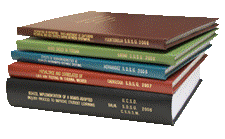Libraries, University of Nebraska-Lincoln

Archival Master’s Theses from the University of Nebraska-Lincoln
Date of this Version
7-1960
Document Type
Thesis
Citation
Thesis (M.S.)—University of Nebraska—Lincoln, 1960. Department of Engineering Mechanics.
Abstract
Solid damping is the phenomena whereby elastic and inelastic materials dissipate energy when subjected to vibration, either free or forced.In highly elastic materials, such as steel, the energy dissipated by damping is quite small; while in inelastic materials, such as lead, this energy dissipation is quite large.
The term damping, as used in this thesis, refers to the energy dissipated within the material itself by some internal mechanism, and excludes all damping mechanisms of an external nature, such as dashpots, vibration dampers, and external additives.
In 1784, Coulomb in his “Memoir on Torsion”, undertook experiments which proved that the damping of torsional oscillations is not caused by air friction, but internal losses in the material.He also recognized that the mechanism operative at low stresses might be different from those operative at higher stresses3.
An investigation, by use of the analog computer, of the effects of combined vicious and Coulomb damping has been reported by Perk and Sherrad4.An investigation of the effects of damping proportional to the velocity squared has been investigated by Real8, also by application of the analog computer.
The results of this investigation indicated the possibility of defining the solid damping mechanism from a basic parameter approach, this parameter being the solid damping coefficient.
Advisor: Gerald M. Smith


Comments
Copyright 1960, the author. Used by permission.